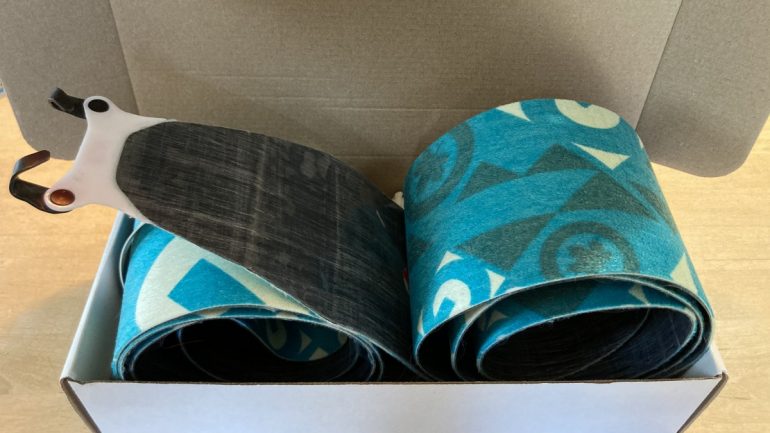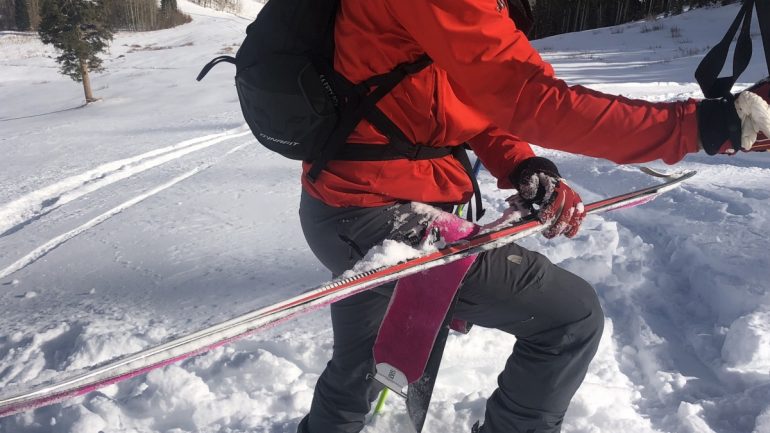With more awareness, the term skincare possesses two meanings in backcountry vernacular; sun-block balms for your epidermis, and the glues, fabrics, and attachments we fret over when it comes to climbing skins. Please practice proper sun-protection (that’s the most critical type of skincare), but here and now, we’re providing a list of resources for climbing skincare.
After yesterday’s sunrise of trail-breaking and skinning with a few partners – these were our first legit powder turns of the season – climbing skins are on my mind.
I’m skiing Movement Alp Track 100s, which lack a tail notch for the skin tail attachment to rest securely. My climbing skin, and their ordinarily secure plastic tail clip, pop off occasionally. I’m hesitant to tension the plastic too much; I’ve had one fail in the field. (I carry two tail clips in my spare parts kit.) On this day, I had my usual tail attachment faux pas while ascending.
These minor mishaps bring us to our first reminder and resource – carry spare attachments, tail, and tip, if you are going deep. Need spare skin parts? Here’s a place to start perusing.
On the same day my skin-tail slid off, one of my partners had issues with cold powder snow interfacing with old skin glue. That’s a headache and potential day-ruiner. Regluing resources below:
–Spot Repairs for funky glue.
–Video from G3 for renewing skin glue.
–A thorough reglue/repair video from American Avalanche Institute.
–For you Francophones out there, here’s Pomoca’s reglue tutorial.
–If you are on Contour Hybrid glue skins, here’s your cleaning/reactivating resource.
–And here’s a final reglue tutorial from “Will to Ride.”
The other low-hanging fruit of this resource list comes from Doug Stenclik in his piece titled “Climbing Skins – Easy Tips To Keep ‘Em Touring.” In this 2019 piece, we learn basics like drying skins after use, storing climbing skins, and waxing skins. Think of this piece as your in-season maintenance tutorial if you are new to the winter backcountry.
If you are a never-ever, as in you are green to backcountry skiing or riding (we all were at some point), dispelling some deeply entrenched myths about climbing skins is in order. Stenclik does that, too; he demystifies the climbing skin game. Reading his “Climbing Skins: 5 Myths and Buying Tips” should get you started if you are buying skins for the first time or are thinking of an upgrade.
The last resource covers in-the-field climbing skin failures. It comes from the venerable Rob Coppolillo. “Field Treatment for Climbing Ski Failure” covers an array of potential failure scenarios and the basics to remedy the situation, or at least get by. These how-tos will make you feel more capable and independent in the backcountry once you make them a part of your repertoire.

New skins are clean skins- for this skier, no pine needles, no dirt, and sticky glue are things to celebrate. But refreshing older skins remains a possibility.
While most of the WildSnow backcountry skiing blog posts are best attributed to a single author, some work well as done by the group.


